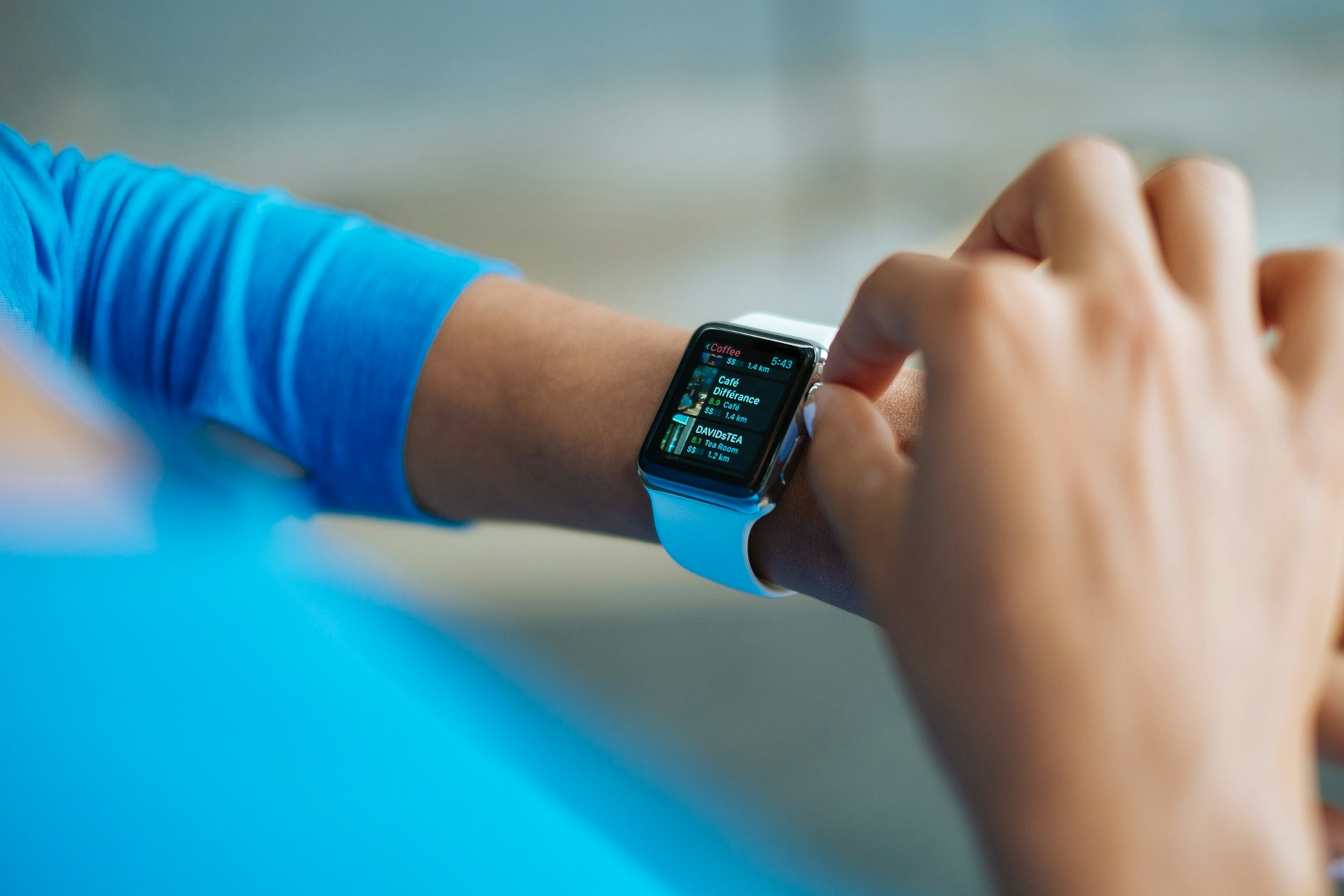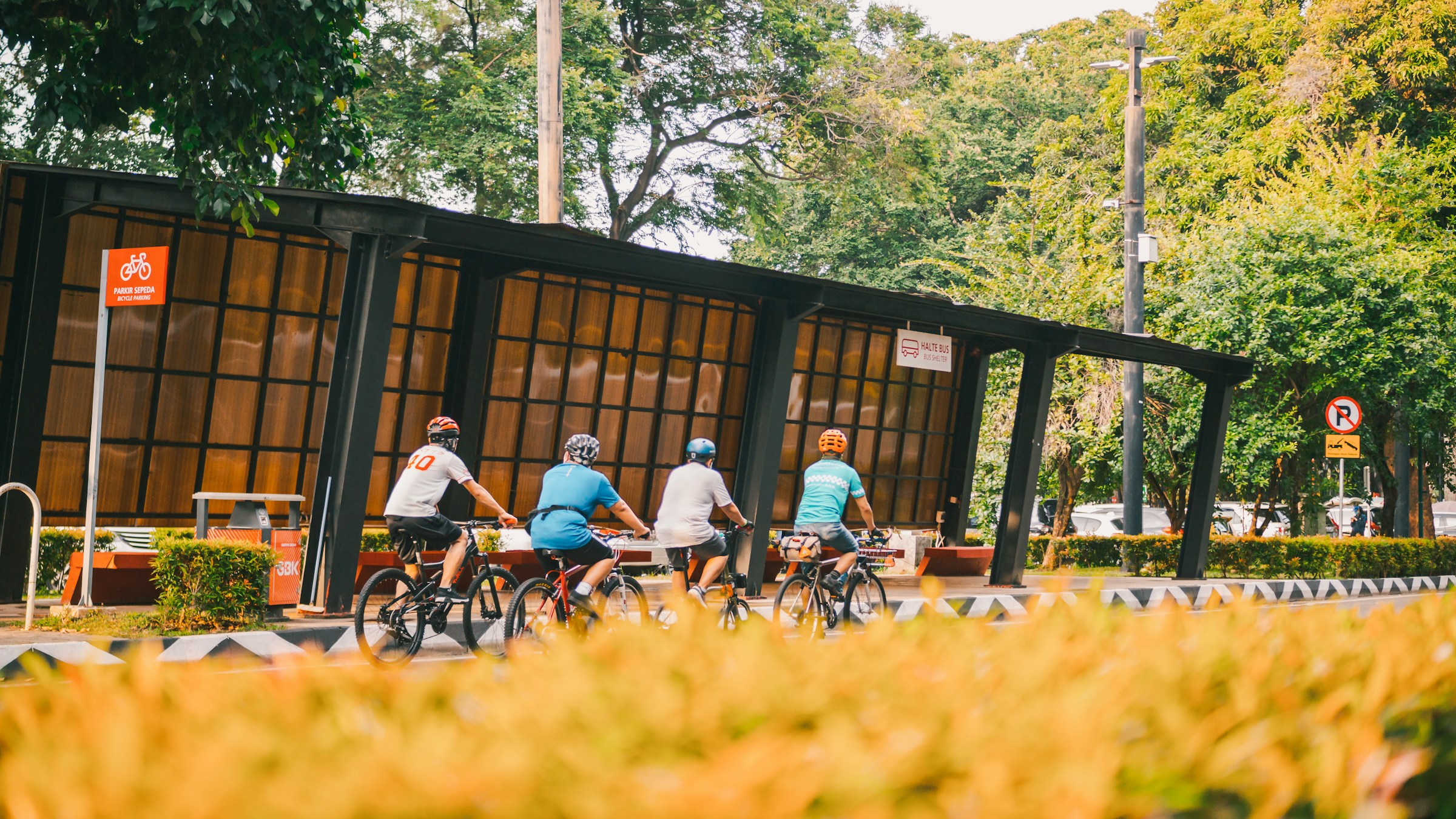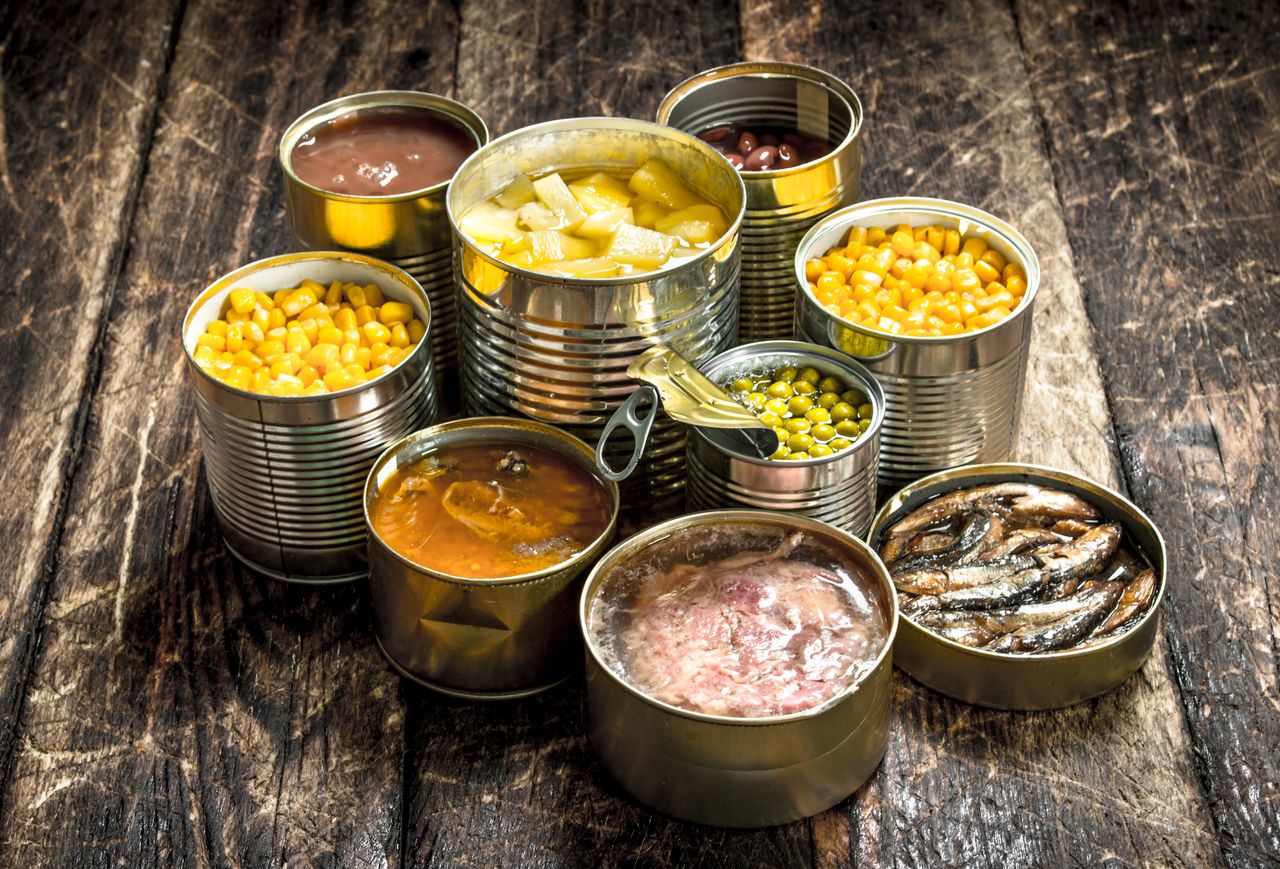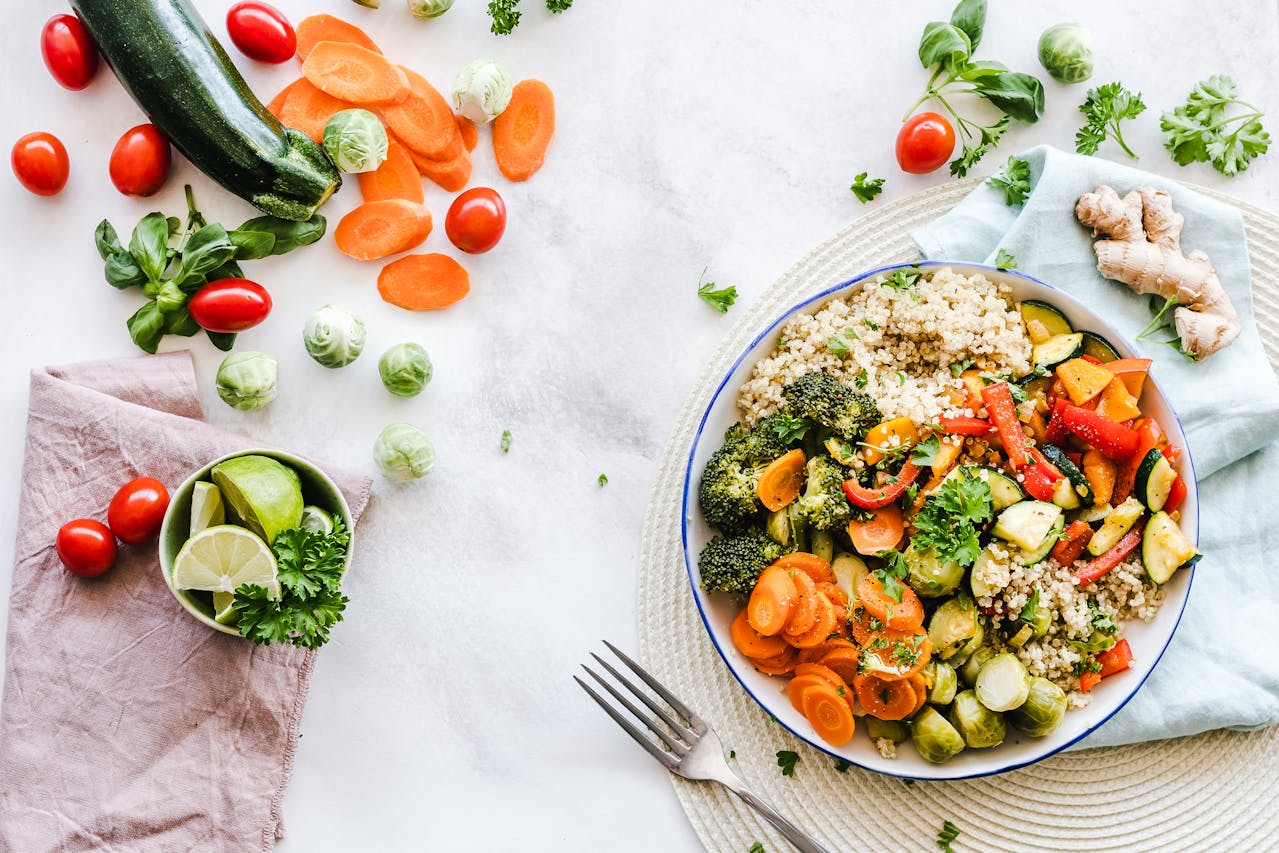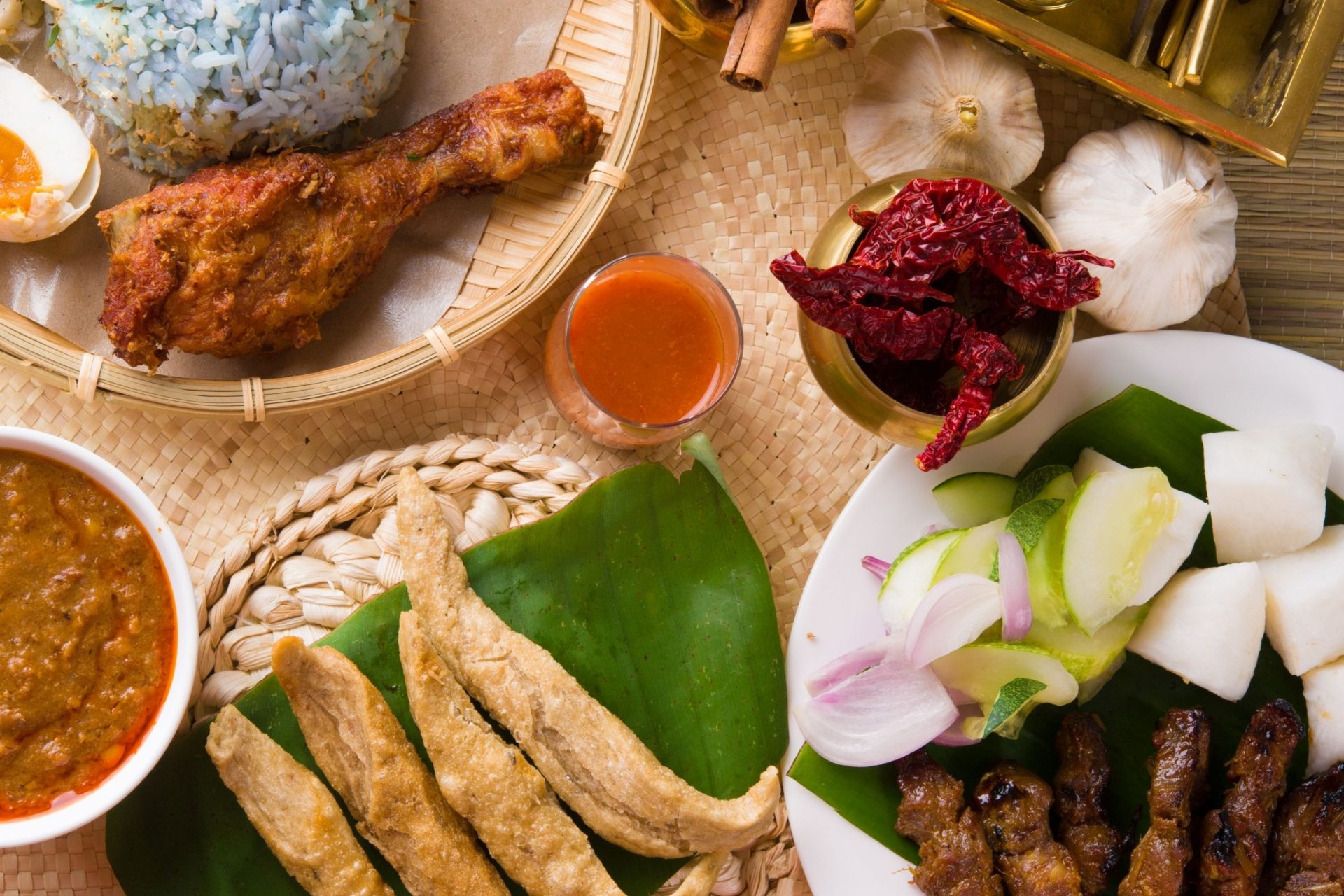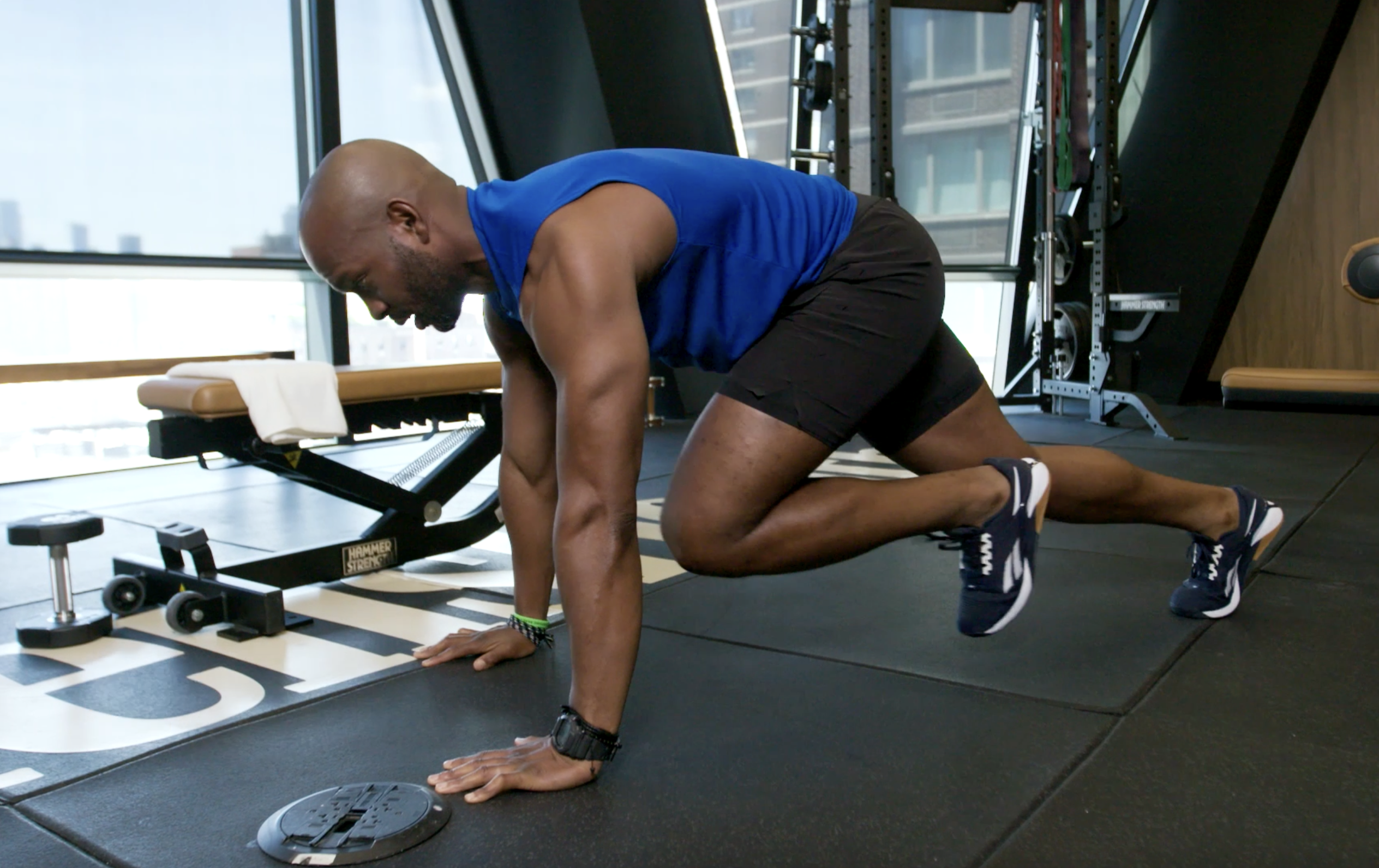https://www.youtube.com/watch?v=x6wiDew4sYU Looking for a simple yet effective way to strengthen and tone your body? This full-body workout routine targets all major muscle groups, from arms and shoulders to legs and core. Whether you’re a beginner or looking to add variety to your fitness regimen, these exercises can help you build strength and improve muscle endurance. Read on to discover step-by-step instructions for each movement in the routine. 1. Elbow Tucks for Shoulder and Arm Strength Elbow tucks are a great way to engage your shoulder muscles and arms. By keeping your elbows tucked in and working against the movement, you’ll strengthen your upper body. Focus on controlling the movement and maintaining good posture throughout. Duration: 30 seconds Key Tips: Keep your elbows in, focus on working against the movement for maximum muscle engagement. 2. Side Raises for Shoulder Endurance Side raises target your shoulder muscles and help improve shoulder stability. You can perform this exercise one arm at a time or both arms simultaneously for a more challenging workout. Be sure to raise your arms only to shoulder height to avoid straining your muscles. Duration: 30 seconds Key Tips: Move slowly and controlled, focusing on keeping your arms level with your shoulders. 3. Front Raise for Arm and Shoulder Strength The front raise is a fantastic exercise for strengthening the shoulders and arms. By slowly raising your arms forward, you activate key muscles in your upper body, promoting tone and strength. Duration: 30 seconds Key Tips: Focus on slow, controlled movements to get the most out of this exercise. 4. Look Over Shoulder Stretch for Neck and Shoulder Relief This gentle movement helps to relieve tension in the neck and shoulders. Simply turn your head from left to right and focus on stretching out the muscles in your neck area. Duration: 30 seconds Key Tips: Take it slow and focus on relaxing your neck muscles. 5. Sit to Stand for Leg and Core Strength The sit-to-stand exercise helps strengthen your legs and core by working on your squat form. Slowly standing and sitting back down targets the muscles in your thighs and glutes while also promoting control in your core. Duration: 30 seconds Key Tips: Push through your heels, and control the movement both when standing and sitting back down. 6. Calf Raises to Strengthen Lower Legs Strengthening your calves is key to maintaining balanced leg strength. By standing on your toes and slowly raising up and down, you will work your calf muscles and improve your balance. Duration: 30 seconds Key Tips: Keep the weight through your big toe and second toe, and raise up fully on your toes. Conclusion: This full-body workout routine incorporates simple yet effective exercises to target different muscle groups, helping you build strength and improve overall fitness. Whether you’re looking to tone your upper body or strengthen your legs, these movements are perfect for all fitness levels. Add them to your weekly routine for optimal results and enhanced muscle endurance. View More
Discover a Taste of New Zealand at Cold Storage: Premium Food & Beverage from 17 April – 7 May 2025
Indulge in the best of New Zealand with the Discover a Taste of New Zealand campaign, happening at Cold Storage and CS Fresh from 17 April – 7 May 2025. This 3-week event features a wide range of premium quality food and beverage products from New Zealand, bringing the very best of the country’s flavors to Singaporean shoppers. 📅 Event Details: Dates: 17 April – 7 May 2025 Locations: Cold Storage & CS Fresh outlets (45 locations across Singapore) Brands Participating: Anchor, Cookie Time, Meadow Fresh, Mother Earth, Otis, Rockit Apple, Tegel, Whittaker’s, Zespri, Zeagold, and more! 🌍 Why Choose New Zealand’s Premium Food? New Zealand is renowned for its clean air, lush pastures, and pure water, all contributing to creating the perfect conditions for producing naturally nutritious and delicious food. The country’s commitment to sustainable farming and ethical production ensures every bite is as good for the planet as it is for your taste buds. What makes New Zealand food exceptional? Sustainability & Ethical Practices: From free-range poultry, grass-fed beef, and GMO-free fruits to premium dairy and Mānuka Honey, New Zealand’s food products are healthier, fresher, and ethically sourced. Global Recognition: New Zealand’s food products consistently win international awards for taste, quality, and sustainability. Farm-to-Fork Journey: New Zealand’s farmers follow stringent quality control measures, ensuring only the best food reaches your table. 🍽️ Explore a Range of Premium Products New Zealand is a global leader in food exports, supplying 80% of its food to over 140 countries. The Discover a Taste of New Zealand campaign brings a wide selection of products, including: Anchor: Premium dairy products Cookie Time: Delicious cookies and snacks Meadow Fresh: Fresh milk and dairy Mother Earth: Natural, nutritious snacks Otis: Healthy snack bars Rockit Apple: Sweet, crisp apples Tegel: High-quality chicken and meats Whittaker’s: Award-winning chocolate Zespri: Premium kiwifruits Zeagold: Gourmet fruits and more! 🛍️ Shop Online & In-Store In addition to Cold Storage and CS Fresh, Comvita products are available at all Comvita x HoneyWorld stores, while Nice & Natural can be found on Lazada. Fourflax is available at Ace Asia Pet Care, and K9 Natural can be found at Kohepets. 🍯 Mānuka Honey & More The star of New Zealand’s premium offerings is undoubtedly Mānuka Honey, known for its health benefits and rich, unique flavor. Found in remote wilderness areas, this honey is celebrated for its ability to boost immunity and enhance everyday wellness. 🌱 Made with Care: Quality You Can Trust The Made with Care initiative underscores New Zealand’s commitment to creating premium food and beverages that respect both people and the planet. New Zealand Trade & Enterprise (NZTE) spearheads this campaign, ensuring global consumers connect with the finest food producers from New Zealand. 🛒 Visit Cold Storage & CS Fresh for Exclusive Deals Don’t miss out on this limited-time promotion to explore the best of New Zealand food. Whether you’re looking for healthy snacks, premium meats, or indulgent chocolates, the Discover a Taste of New Zealand campaign at Cold Storage and CS Fresh offers a curated selection that promises to elevate your meals. For more details or to locate your nearest store, visit Cold Storage or CS Fresh online.
Top Shopee and Lazada Finds for Home Workouts in Singapore
As the popularity of home workouts continues to soar, many fitness enthusiasts in Singapore are turning to online shopping platforms like Shopee and Lazada to find budget-friendly and effective workout gear. Whether you’re a beginner or a seasoned gym-goer, setting up a home gym doesn’t have to be expensive or complicated. With a few smart buys from these popular e-commerce platforms, you can create a workout space that caters to all your fitness needs. In this article, we’ll walk you through some of the best Shopee and Lazada finds that will take your home workout to the next level — from resistance bands to dumbbells and yoga mats. Let’s dive into these top-rated products you should consider adding to your cart. 💪 1. Resistance Bands (for Full-Body Toning) Resistance bands are one of the most versatile and affordable tools for home workouts. They help improve strength, flexibility, and endurance by adding resistance to your movements. Whether you’re doing squats, lunges, or arm exercises, resistance bands are great for targeting multiple muscle groups. They’re also lightweight, portable, and easy to store. Why buy it? Can be used for a variety of exercises. Perfect for both beginners and advanced fitness levels. Affordable and space-efficient. Popular Choices: Shopee: Resistance Bands Set (includes multiple resistance levels) Lazada: Fabric Resistance Bands (less prone to rolling up) 🏋️♂️ 2. Dumbbells (for Strength Training) If you’re serious about building strength at home, dumbbells are essential. Whether you’re focusing on toning your arms, legs, or even your back, dumbbells are incredibly effective in building muscle mass. Many sets come with different weight options, allowing you to gradually increase the challenge as you progress. Why buy it? Helps in muscle development and toning. Compact and easy to store. Adjustable weight sets offer versatility. Popular Choices: Shopee: Adjustable Dumbbell Set (up to 20kg) Lazada: Hexagonal Dumbbells (durable and non-slip) 🧘♀️ 3. Yoga Mats (for Comfort and Stability) No home workout is complete without a comfortable, slip-resistant yoga mat. Whether you’re doing yoga, Pilates, or bodyweight exercises like push-ups and planks, a quality mat provides extra cushioning for your joints and keeps you stable during exercises. Look for mats with sufficient thickness and non-slip material to ensure you’re comfortable throughout your workout. Why buy it? Cushions joints during exercises. Lightweight and portable for easy storage. Ideal for yoga, stretching, and core exercises. Popular Choices: Shopee: Eco-Friendly Yoga Mat (non-slip, 6mm thickness) Lazada: TPE Yoga Mat (lightweight, water-resistant) 🔩 4. Jump Ropes (for Cardio and Endurance) Jumping rope is a fantastic cardio workout that helps improve endurance, coordination, and agility. It’s a highly effective way to burn calories quickly and enhance cardiovascular health. Plus, jump ropes are easy to store and can be used anywhere, making them a perfect addition to your home workout routine. Why buy it? Great for cardio and weight loss. Compact and portable. Affordable and easy to use. Popular Choices: Shopee: Adjustable Jump Rope with Ball Bearings Lazada: Speed Jump Rope (lightweight, durable) 🏃♂️ 5. Foam Rollers (for Muscle Recovery) Foam rolling is an excellent way to relieve muscle tension, improve flexibility, and promote recovery after a workout. Whether you’re doing intense strength training or cardio, foam rolling helps release tight muscles and prevent injuries. It’s especially helpful after long sessions of sitting or repetitive motions like running. Why buy it? Promotes muscle recovery and flexibility. Helps in reducing soreness. Easy to use and compact. Popular Choices: Shopee: High-Density Foam Roller (12 inches, multi-texture) Lazada: Vibrating Foam Roller (for deeper muscle relaxation) 📏 6. Adjustable Kettlebells (for Functional Training) Kettlebells are perfect for dynamic exercises that target multiple muscle groups, including swings, squats, and presses. Adjustable kettlebells let you change the weight, so you can progressively overload your muscles for strength and endurance. They also take up less space compared to a full set of traditional kettlebells. Why buy it? Versatile for full-body workouts. Adjustable weights for varied exercises. Compact, saving space in your home gym. Popular Choices: Shopee: Adjustable Kettlebell (up to 16kg) Lazada: Neoprene Coated Kettlebells (comfortable grip) 🏅 7. Ab Wheel (for Core Strengthening) An ab wheel is one of the most effective tools for strengthening your core. It works your abs, back, shoulders, and arms, providing a full-body workout while focusing on your midsection. It’s compact and highly affordable, making it a must-have for anyone looking to enhance their core strength at home. Why buy it? Targets the core and upper body. Compact and easy to store. Effective for beginners and advanced users. Popular Choices: Shopee: Ab Wheel with Knee Mat Lazada: Dual Ab Wheel (with wider grips for stability) 📱 8. Fitness Tracker (for Tracking Progress) To keep track of your progress and stay motivated, a fitness tracker is a valuable addition to your home workout routine. Whether you’re tracking steps, calories, sleep quality, or heart rate, a fitness tracker helps you stay on top of your fitness goals. Some smartwatches even offer workout modes with real-time data. Why buy it? Helps monitor workouts and progress. Offers motivation with real-time feedback. Tracks key metrics like heart rate and calories burned. Popular Choices: Shopee: Fitness Tracker Smartband Lazada: Smartwatch with Heart Rate Monitor By investing in these budget-friendly home workout essentials, you can elevate your fitness game without leaving the comfort of your home. Shopee and Lazada offer a wide range of quality options, so whether you’re looking to add a few basic tools to your routine or build a full home gym, these platforms have you covered.
TYR Warehouse Sale: Up to 80% OFF From 17-20 April 2025
Get ready for unbelievable savings as TYR brings back its highly anticipated Warehouse Sale this April, offering up to 80% OFF on a wide range of swim gear, sports apparel, and accessories! Whether you’re an active swimmer or just love stylish, high-performance activewear, this sale is a must-visit. 📅 Event Details: Dates: 17 – 20 April 2025 Time: 10AM – 6PM daily Venue: 8 Jalan Kilang Timor, Kewalram House #03-01, Singapore 159305 Payment: Cash & NETS only Held during the Good Friday long weekend, it’s the perfect opportunity to grab top-tier TYR swim and activewear at a fraction of the price. 💥 Price Highlights & Bundle Deals The sale features unbeatable bundle offers across various categories: Premium Swimsuits & Rash Guards:1 for $25 or 3 for $60 Casual Sports Tees & Printed Shorts:1 for $18 or 3 for $45 Kids’ Swimwear & Training Gear:1 for $12 or 3 for $30 Accessories (Goggles, Caps, Snorkels & More):Prices from as low as $5 🎁 FREE Gifts with Purchase The more you spend, the better the gift! Take advantage of the tiered rewards: Spend $100 – Get a TYR gym tote Spend $200 – Receive a TYR water bottle Spend $300 – Walk away with a stylish TYR backpack While stocks last, so be sure to grab your rewards quickly! 🇸🇬 SG60 Special: Daily $0.60 Deals In celebration of SG60, TYR is offering $0.60 redemptions to the first 300 customers each day with a minimum spend of $60 in a single receipt. Customers will receive one of the following mystery items: Microfiber towel Toiletry set Sports headband Eyewear protective case Note: Redemption items are issued at random each day. 📍 How to Get There The TYR Warehouse Sale is conveniently located at: 8 Jalan Kilang Timor, Kewalram House #03-01, Singapore 159305 With free parking available and easy access via public transport, shopping has never been more convenient.
Wing Tai Retail Fashion Expo Sale: Up to 60% Off From 18-20 April 2025
The Wing Tai Retail Fashion Expo Sale is back with a bang this April, offering up to 60% off on a wide range of fashion items! This highly anticipated event is set to take place from 18 to 20 April 2025 at the Singapore Expo, making it a must-visit for all fashion enthusiasts and bargain hunters. 🏷️ Unbeatable Deals on adidas and More Headlining the sale is adidas, one of the world’s most iconic sportswear brands, offering incredible markdowns of up to 60% off on shoes, accessories, sportswear, and more. Whether you’re in the market for new sneakers, workout gear, or stylish athleisure, adidas has something for everyone. But the savings don’t stop there! Wing Tai Asia Retail is also bringing discounts from its extensive portfolio of top international fashion labels, ensuring a variety of styles and brands to meet all tastes and budgets. 📅 Event Details: Dates: 18 – 20 April 2025 Time: 11am – 9pm daily Venue: Singapore Expo Level 2, Foyer 2 (Above Subway) Access: Conveniently accessible via public transport, with plenty of space to accommodate eager shoppers. 👟 What to Expect With markdowns across a wide range of fashion products, including: adidas Shoes – Up to 60% off adidas Accessories & Sportswear – Major discounts on workout gear and lifestyle apparel More Fashion Labels – Get amazing deals on apparel and footwear from top-tier brands under Wing Tai’s portfolio. Expect to see new arrivals, exclusive deals, and the chance to refresh your wardrobe with high-quality, stylish pieces—all at unbeatable prices. Whether you’re looking for trendy outfits, stylish kicks, or fitness gear, the Wing Tai Retail Fashion Expo Sale is the perfect place to find it. 📍 How to Shop the Sale: The sale runs for three days only, so make sure to plan your visit early. The best items will go quickly, and stocks are limited, so don’t miss out on these incredible savings. For those looking for the best picks, head down early to get the first choice of the available deals.
FairPrice Weekly Deals: Ben & Jerry’s 2-for-$19.90, 30% Off Toblerone Minis, and More Until 23 April 2025
FairPrice is bringing unbeatable savings this week with discounts of up to 55% off a range of popular items! Whether you’re stocking up on everyday essentials, snacks, or indulging in some sweet treats, FairPrice’s latest deals have something for everyone. These offers are valid until 23 April 2025, so don’t miss out! 🍦 Ben & Jerry’s Ice Cream at 2-for-$19.90 Calling all ice cream lovers! For a limited time, you can grab Ben & Jerry’s ice cream pints at an amazing price of 2 for $19.90, down from the regular price of $30.36. This means you’re paying just $9.95 per tub, perfect for indulging in your favorite flavors while saving big. Available in a variety of delicious options, including: Choco-lotta Cheesecake Sundae Chocolate Therapy Cherry Garcia Spectacu-love Peanut Butter Smores Marshmallow & S’more Sundae Chocolate Chip Cookie Dough Chocolate Fudge Brownie Dulce De-lish Sundae New York Super Fudge Chunk Vanilla You can find these in-store at FairPrice outlets or shop online at FairPrice’s website for extra convenience. 🍫 Toblerone Minis: 30% Off If you’re a fan of chocolate, don’t miss out on the Toblerone Minis Share Pack (200g), which is currently 30% off. Originally priced at 3 for $15.60, these iconic Swiss chocolate treats are now available at a discounted price, making them an ideal snack or gift for your loved ones. 🍕 Buitoni Pizza at 44% Off Craving pizza? Enjoy 44% off selected Buitoni Pizzas, now only $6.46 each, down from $11.54. Available in various sizes (270g – 380g), these gourmet pizzas are a quick and delicious meal solution for busy days. 🏷️ More Deals You Don’t Want to Miss In addition to these amazing offers, FairPrice is offering huge discounts on other popular items: Paseo Slim & Healthy Oil Absorb Kitchen Towel (6s x 60 sheets) – 2 for $16.32 Head & Shoulders Shampoo Assorted (650ml) – 2 for $32 Sofsil Fabric Softener Refill (Assorted 1.4L/1.5L) – 4 for $10.36 FairPrice Sunflower Oil (5L) – $22.95 Selleys Laundry Pods Refill (Assorted 60s) – 3 for $86.70 Magiclean Toilet Bleach Power Cleaner (Regular/Lemon 500ml) – 4 for $15.08 Kotex Luxe/Soft Herbal/Soft Comfort Ultrathin Wing Pads (Assorted 23cm – 41cm, 10s-16s) – 3 for $18.81 FairPrice Crispy Chicken Popcorn (500g) – 2 for $15.12 🛍️ How to Redeem These Offers Simply head to your nearest FairPrice outlet or visit the FairPrice online store to take advantage of these fantastic deals. Be sure to check for any in-store exclusives or availability before visiting. Don’t wait too long, as stock is limited and these deals are only available until 23 April 2025. Whether you prefer shopping in-store or online, FairPrice’s latest promotions are designed to help you save on everything you need. 📍 Find Your Nearest FairPrice For more details or to locate your nearest FairPrice outlet, use their store locator tool or visit their website at www.fairprice.com.sg.
How to Turn Your Daily Commute Into a Fitness Opportunity
In today’s fast-paced world, many of us struggle to find time for exercise. Long work hours, family commitments, and endless responsibilities often leave little room for a regular workout routine. But what if we told you that one of the biggest time-consumers in your day — your daily commute — could actually be transformed into an effective fitness opportunity? Whether you’re commuting on foot, by bike, train, or even in a car, there are creative ways to inject physical activity into your journey. It’s all about reframing the time you spend getting from Point A to Point B as a moment to boost your physical and mental health. 🚶♂️ If You Walk to Work or the Station:You’re already on the right track — literally. Walking briskly instead of strolling can significantly elevate your heart rate and turn a basic walk into a cardio workout. Add in small modifications like taking the stairs, power-walking uphill, or wearing ankle weights to increase resistance. If your commute is short, consider parking a few blocks further or getting off a station earlier to lengthen your walk. 🚲 If You Bike:Cycling is one of the best low-impact cardio workouts. Make your rides count by maintaining a consistent speed, adding a few hill climbs, or increasing your resistance. Invest in a proper commuter bike and safety gear so your fitness routine doesn’t compromise your comfort or security. Biking not only helps with weight loss but improves your cardiovascular system and reduces stress. 🚆 If You Take Public Transport:You can still stay active while waiting for buses or trains. Try doing calf raises, standing on one leg to engage your core, or taking the stairs instead of the escalator at the station. Once on the train or bus, tighten your abs for 30-second intervals, stand instead of sitting to engage stabilizer muscles, or perform subtle leg lifts. It may not be a sweat session, but it keeps your muscles activated. 🚗 If You Drive to Work:You can’t exactly jog behind the wheel, but you can make small changes that add up. Park farther away from the building to increase your walking distance. Practice deep-breathing techniques or seated ab contractions during red lights to engage your core. After arriving, take a brisk walk around the building before heading in. Every step counts! 🧘 Turn Commute Time Into Mind-Body Time:If your commute is long and sedentary, consider pairing it with mindfulness or stretching routines. Listen to guided meditations, mentally rehearse gratitude, or use public transport downtime to plan your fitness goals for the week. A healthy mind complements a healthy body. The key is consistency and creativity. You don’t need an hour at the gym to stay in shape — you just need intention. With a few habit shifts, your daily commute can become a surprisingly powerful fitness ally. It’s about time we stop viewing commuting as wasted time and start using it as an opportunity to energize our bodies and improve our well-being. Take the first step — literally — and see how a few minor changes can lead to major results.
Sheng Siong 4-Day Sale: 1-for-1 Magnolia Ice Cream, DEKA Snacks & More Deals Until 20 April 2025
Get ready to stock up and save as Sheng Siong Supermarket rolls out its highly anticipated 4-Day In-Store Specials from 17 to 20 April 2025! Whether you’re looking to replenish your kitchen, top up on household essentials, or grab a treat for yourself, these unbeatable deals are not to be missed. From irresistible 1-for-1 ice cream deals to pantry staples and toiletries at discounted prices, there’s something for everyone. Remember, offers are limited to 4 units per product per customer per transaction—and no traders are allowed, so it’s all about giving real savings to everyday shoppers. While stocks last! 🍦 Ice Cream & Frozen Treats You Can’t Resist Indulge in cool delights this hot season: MAGNOLIA Mag-A-Cone (Assorted Flavours) 4 x 115ml – Buy 1 Free 1 at just $8.14 PENGUIN Ice Cream Potong (Assorted Flavours) 8x65ml – 2 for $6.95 (U.P: $9.08) 🥨 Snacks & Treats for Everyone Perfect for tea-time, movie nights, or on-the-go munching: DEKA Mini Wafer Bites (Assorted Flavours) 72g – Buy 1 Free 1 at $1.40 LOKE KEE Kai Chai Biscuit 70g – $3.85 (U.P: $5.90) LAYS / DORITOS / CHEETOS Potato Chips 50g-65g – 2 for $3.00 (U.P: $3.80) 🦞 Frozen & Chilled Food Offers Time to fill your freezer with great value: FIGO Lobster Ball / Steamboat Choice 5 in 1 500g – 2 for $10.95 (U.P: $12-$15) KIZMIQ Fried Boneless Chicken Thigh 1kg – $10.95 (U.P: $13.01) 🍜 Pantry Essentials at Discounted Prices Your go-to ingredients are now more affordable: SWANSON Chicken/Pork Bone Broth 1L – 2 for $7.20 (U.P: $11.10) TAI HUA Premium Oyster Sauce 510g – $2.85 (U.P: $3.56) PREGO Pasta Sauce (Assorted Flavours) 665-680g – $5.80 (U.P: $7.46-$8.17) GOLDEN BRIDGE Luncheon Meat (Chicken/Pork) 340g – 2 for $7.40 (U.P: $9.16) NONGSHIM-Miga Glass Noodle 500g – $2.95 (U.P: $5.50) 🥣 Instant Breakfast & Beverages Kickstart your mornings with these great offers: SUPER Nutremill 3in1 Instant Cereal (Double Oats/Brown Rice) 18s x 30g – 2 for $9.95 (U.P: $12.10) SUPER Nutremill 3in1 Instant Cereal (Original/Chocolate/Less Sugar) – 2 for $8.35 (U.P: $10.50) UNISOY Soy Pudding Premix Original/Matcha 2s-3s x 40g – Buy 1 Free 1 at $3.83 🧼 Toiletries & Household Must-Haves Keep your home clean and fresh with savings: SYSTEMA Shikkari Dual Toothbrush 2s – Buy 1 Free 1 at $13.19 SYSTEMA Toothpaste (Whitening / Breath Health) 130g – Buy 1 Free 1 at $5.03 LAURIER Relax Night Menstrual Pants M-XL 2s – $1.95 (U.P: $3.25) HARPIC Toilet Cleaner (3 x 500ml) – $6.40 (U.P: $8.98) THIRSTY HIPPO Moisture Absorber 6s + 2s x 600ml – $12.90 (U.P: $19.93) 🥤 Refreshing Beverage Deals Stay hydrated and refreshed with these tasty picks: YEO’S 100% Coconut Water 1L – 2 for $5.45 (U.P: $7.92) JUSTEA White Grape Green Tea 4x6x250ml – $8.45 (U.P: $11.50) YEO’S Lemon Tea 4x6x250ml – $8.45 (U.P: $13.01) 📍 Don’t Miss Out – Head to Your Nearest Sheng Siong Today! This limited-time Sheng Siong 4-Day Sale is your golden chance to save big on everyday essentials, frozen treats, pantry items, and more. From 17 to 20 April 2025, drop by any Sheng Siong outlet across Singapore and enjoy these exclusive deals — but hurry, offers are valid while stocks last!
Should You Invest in a Fitness Watch or Just Use Your Phone?
In today’s fitness-conscious world, tracking your steps, heart rate, and calories has become as common as checking your emails. But when it comes to tracking your health and fitness goals, you might be wondering — should you invest in a fitness watch or just use your smartphone? Both options come with pros and cons, and the right choice depends on your lifestyle, fitness goals, and how much tech you actually need. Let’s dive deep into the real differences between fitness watches and smartphones when it comes to helping you stay active, healthy, and motivated. ⌚ The Case for Fitness Watches Fitness watches — from Fitbits to Apple Watches and Garmins — are designed with health tracking as their main function. These smart wearables come with an array of built-in sensors that measure things like: Heart rate monitoring (24/7) Sleep quality analysis Real-time step tracking GPS route mapping VO2 max and advanced fitness metrics Stress and oxygen level tracking They’re strapped to your wrist all day, giving you accurate, real-time data without needing to hold or carry anything. If you’re serious about developing consistent workout habits, fitness watches give you insights and reminders that a phone simply can’t. Some even offer on-screen workouts, hydration reminders, or health alerts based on heart rate abnormalities. Best for: Runners, cyclists, and swimmers People with specific health goals Users who prefer hands-free data tracking Fitness beginners who need constant motivation 📱 The Case for Using Your Phone Don’t underestimate your smartphone’s ability to keep you healthy. With apps like Google Fit, Apple Health, Strava, or MyFitnessPal, your phone can track steps, calories, distance, and even your walking route using GPS. Smartphones are convenient because you already carry them everywhere. Plus, most newer models are equipped with motion sensors, gyroscopes, and even basic heart rate sensors (in some models or with third-party attachments). For someone who’s just starting out or isn’t ready to invest in another gadget, your phone is a cost-effective and reliable alternative. Best for: Casual walkers or step-trackers People who dislike wearing devices Budget-conscious users Occasional fitness tracking (not 24/7) 📊 Key Differences at a Glance: Feature Fitness Watch Smartphone Step Tracking ✅ More accurate (wrist-based) ✅ Decent (pocket-based) Heart Rate Monitoring ✅ 24/7 & real-time ⚠️ Limited or app-based only Sleep Tracking ✅ Yes ❌ Rarely Workout Detection ✅ Auto detect ⚠️ Manual app start required GPS ✅ Built-in (some models) ✅ App-based Battery Usage ✅ Low (designed for long wear) ⚠️ High battery drain Price ❌ Additional cost ($100–$600) ✅ No extra cost Motivation & Reminders ✅ Built-in goals & prompts ⚠️ Depends on apps/settings 💡 So, Which Should You Choose? If you’re just starting your fitness journey, your phone is a great place to begin. It’s free, convenient, and capable of tracking basic health metrics. You can experiment with different fitness apps and see what type of data motivates you most. However, if you’re looking to level up your fitness, stay consistent, and want more detailed insights — a fitness watch is worth the investment. It helps you develop healthier habits through constant monitoring, subtle nudges, and a seamless, hands-free experience. And let’s not forget: the convenience of checking your progress just by lifting your wrist can’t be overstated — especially when you’re in the middle of a workout. 🎯 Final Verdict:Start with your phone to understand your needs. Upgrade to a fitness watch when you’re ready to take your health more seriously or want a deeper level of accountability.
Beginner Walking Trails in Singapore That Actually Burn Calories
When it comes to getting fit in Singapore, you don’t always have to hit the gym or join an expensive class. Walking, one of the simplest forms of exercise, can be just as effective — especially when done consistently and in the right environment. But not all walking trails are created equal. If you’re a beginner looking to burn calories without feeling overwhelmed, Singapore has some surprisingly effective routes that combine scenic views, light inclines, and enough distance to give your heart a workout. Here are some beginner-friendly walking trails in Singapore that are not only manageable but also help you torch calories while enjoying nature. 🌿 1. MacRitchie Reservoir Park (Boardwalk Trail)Distance: 3km – 5km loopThis iconic nature spot is a top choice for beginners who want a peaceful environment with lush greenery and calming waters. Stick to the boardwalk trail, which is relatively flat and shady, making it perfect for morning or evening walks. The route gently challenges your stamina and can burn approximately 180–250 calories per hour, depending on your pace. 🍃 2. Southern Ridges (Henderson Waves to HortPark)Distance: 5km one-wayOne of the most beautiful and accessible walking experiences in Singapore, the Southern Ridges is ideal for beginners looking for a scenic yet slightly elevated route. Walking across the Henderson Waves bridge and through the canopy walk gives your calves a light burn while your eyes enjoy the forest views. Expect to burn 220–300 calories in under an hour. 🏙️ 3. Marina Bay Waterfront PromenadeDistance: 3.5km loopPrefer city views? The Marina Bay route is perfect. It’s flat, wide, and suitable even for those in office attire looking for a lunchtime walk. The sparkling skyline and fresh waterfront air make it feel less like exercise and more like a scenic escape. A brisk walk here can help you burn 150–200 calories easily — with great selfie spots to spare. 🌾 4. Dairy Farm Nature Park (Wallace Trail)Distance: 2.2km loopA short but surprisingly effective trail, the Wallace Trail introduces you to forested terrain without being too intense. The uneven ground and mild inclines get your heart rate up while remaining beginner-friendly. You can expect a calorie burn of around 200 calories in 45 minutes. 🪵 5. Pasir Ris Mangrove BoardwalkDistance: 1.5km (extendable)This underrated trail is serene and perfect for beginners. The cool shade of the mangroves, combined with wooden boardwalks and occasional wildlife sightings, makes this a great way to ease into fitness walking. Walking at a relaxed pace still lets you burn 120–180 calories while lowering stress levels. 🌇 6. Bukit Batok Nature ParkDistance: 3km+Known for its tranquil ambiance and quarry views, Bukit Batok Nature Park has gentle slopes that help tone your legs while maintaining a beginner-friendly pace. A few stair climbs are thrown in for good measure, but nothing too intense. A full walk here can net you 220–280 calories burned. 💡 Tips to Maximize Calorie Burn While Walking: Maintain good posture: Engage your core and swing your arms. Add short bursts of speed (interval walking) to challenge yourself. Wear proper walking shoes to prevent injuries and support movement. Stay hydrated, especially in Singapore’s humid weather. Walking might seem simple, but when done right, it becomes a sustainable and effective fitness habit. Whether you’re trying to lose weight, improve your mental health, or just get moving after sitting all day, these trails offer the perfect start. Singapore’s natural parks and urban paths are a fitness playground just waiting to be explored — one step at a time.
The Rise of Indoor Cycling Studios in Singapore
In recent years, Singapore has seen a surge in fitness trends that prioritize both efficiency and community — and at the heart of this movement is the rapid rise of indoor cycling studios. Once considered a niche workout, indoor cycling (or “spin classes”) has evolved into a full-blown lifestyle embraced by fitness enthusiasts, working professionals, and even first-time gym-goers looking for an engaging way to stay active. So, what’s behind this two-wheeled revolution? 🚴♀️ High-Energy, Low-Impact FitnessIndoor cycling offers a cardio-intensive experience that’s easy on the joints, making it accessible for people of all ages and fitness levels. Unlike traditional cycling, spin classes are guided by instructors who curate music-driven, high-energy sessions that motivate riders to push their limits — all within a safe, climate-controlled environment. With options to control resistance and pacing, each participant can tailor the workout to their own capacity. 🌆 Perfect for Urban LifestylesSingapore’s bustling urban environment makes it challenging for many to commit to outdoor workouts. Rainy weather, traffic, or limited cycling paths in certain areas can deter people from hitting the roads. Indoor cycling studios fill that gap by offering a predictable, time-efficient fitness solution. Classes are typically just 45 to 60 minutes, making them ideal for lunch breaks or after-work sessions in the CBD. 🏋️♂️ Boutique Studio CultureFrom studios like Absolute Cycle, Aurora Spin Studio, and CruCycle, to luxury chains integrated into wellness hubs, spin studios have built loyal followings. These spaces often offer more than just a workout — they provide a lifestyle experience. Think mood lighting, thumping music, choreographed routines, and passionate instructors who are as much cheerleaders as they are trainers. The result? A cult-like community where members motivate each other and return week after week. 💡 Tech-Enhanced FitnessModern studios in Singapore are fully decked with smart equipment and performance-tracking systems. Riders can monitor their RPMs, resistance levels, and calories burned in real-time, adding a gamified element to their workout. Some studios even offer leaderboards to fuel friendly competition. 🧘 Mental Health and MotivationMore than just a physical challenge, spin classes provide a powerful mental boost. The combination of music, community energy, and guided coaching creates a therapeutic release from daily stress. Riders often describe the experience as cathartic — sweating it out in a dark room surrounded by motivating beats and positive reinforcement. 💼 Corporate Tie-Ins and Wellness CultureCompanies are also jumping on board by partnering with indoor cycling studios to offer subsidized sessions as part of employee wellness programs. As work-life balance becomes more valued in Singapore, these classes are being seen as an efficient way to burn calories, reduce stress, and reconnect with wellness goals. 🚀 What’s Next?The future of indoor cycling in Singapore looks bright. Studios are expanding into heartland areas, targeting suburban fitness seekers. Virtual spin classes are also becoming popular, allowing people to join live sessions from home. Whether you’re a seasoned athlete or someone looking for a fun way to stay fit, indoor cycling is more accessible than ever. So if you haven’t clipped in yet, maybe it’s time to hop on the saddle — and experience for yourself why Singaporeans are spinning their way to better health.
Mummys Market Biggest Baby Fair Returns to Singapore Expo from 18 – 20 April 2025
Get ready, parents! The highly anticipated Mummys Market Biggest Baby Fair in Southeast Asia is making its exciting return to the Singapore Expo from 18 to 20 April 2025. As the premier baby and maternity expo in Singapore, this event promises unbeatable deals, essential parenting products, and a vibrant atmosphere that’s perfect for families with little ones and those expecting. 🍼 Why You Shouldn’t Miss Mummys Market Baby Fair Recognized as Southeast Asia’s largest baby fair, the Mummys Market event is a one-stop destination for expecting parents, new families, and caregivers. With over 250,000+ brands and products showcased under one roof, it’s no surprise this event draws massive crowds each year. Whether you’re looking for: Strollers & baby carriers Maternity wear & nursing accessories Diapers, milk bottles, and feeding gear Baby clothes, toys, and furniture You’ll find everything you need in one convenient location—at unbeatable prices. 🎁 1,500 FREE Pregnancy Goodie Bags Up for Grabs As an added bonus, expecting moms who attend the fair will have a chance to redeem exclusive pregnancy goodie bags, packed with essential baby items. A total of 1,500 bags will be distributed across the 3-day event: 500 goodie bags available daily Redemption is on a first-come, first-served basis Terms and conditions apply This thoughtful giveaway is just one of many reasons why parents flock to the Mummys Market year after year. 💸 Enjoy Discounts of Up to 90% Off Looking for the best baby deals in Singapore? You’ll find them here. With discounts of up to 90% off on selected items, it’s the perfect time to stock up on all your maternity and baby care needs without breaking the bank. Expect exclusive promotions, bundle deals, and limited-time offers across a wide range of trusted baby and maternity brands. 🧠 Learn & Connect with Parenting Experts Besides shopping, Mummys Market also features: Educational seminars by pediatricians, nutritionists, and parenting coaches Workshops on childbirth preparation, breastfeeding, and newborn care Engaging activities for toddlers and young children It’s a great chance for new and soon-to-be parents to learn from professionals, discover new tips, and meet other families on a similar journey. 📍 Event Details at a Glance Event Name: Mummys Market – Biggest Baby Fair in Southeast Asia Dates: 18 – 20 April 2025 Venue: Singapore Expo Admission: FREE for all visitors Goodie Bags: 500 per day (for expecting mothers only, while stocks last) Website: Mummys Market Official Site (update with actual link if needed) 👨👩👧 A Must-Visit Event for Every Parent Whether you’re expecting your first child or already managing a growing family, the Mummys Market Baby Fair offers an exciting and convenient way to explore, learn, and save—all in one place. With its incredible range of products, expert-led sessions, and community vibe, it’s no wonder this event has become a favorite among Singapore’s parenting community. Mark your calendars now and head down to the Singapore Expo from 18 – 20 April 2025 for the biggest baby shopping experience of the year! For more info, visit www.mummysmarket.com.sg/expobabyfair
Beat the Heat & the Slump: Healthy Mid-Afternoon Snacks for Singaporean Offices
The mid-afternoon in a Singaporean office can be a challenging time. The combination of a post-lunch lull and the lingering April heat can lead to energy dips, decreased focus, and a craving for sugary pick-me-ups. However, reaching for unhealthy snacks can lead to a subsequent crash. Instead, opt for healthy snacking options that provide sustained energy and keep you refreshed in Singapore’s warm climate. The Mid-Afternoon Battle: Heat and the Energy Crash Several factors contribute to the mid-afternoon slump in Singapore’s office environment: Post-Lunch Digestion: The body’s natural process of digesting lunch can divert energy, leading to drowsiness. Dehydration: The Singapore heat can lead to subtle dehydration, even in air-conditioned offices, contributing to fatigue. Blood Sugar Fluctuations: Sugary snacks provide a quick energy burst followed by a rapid crash, exacerbating the slump. Mental Fatigue: Prolonged concentration and screen time can lead to mental exhaustion. Your Arsenal Against the Slump: Healthy & Refreshing Snack Ideas Here are some energy-boosting and nutritious snack options perfect for Singapore’s office environment, considering the April heat: Hydrating Fruits with Natural Sugars: Watermelon: High in water content and natural sugars for a refreshing energy boost. Easy to slice and share. Grapes: Portable and naturally sweet, offering quick energy and hydration. Keep a bunch in the office fridge. Oranges: Rich in Vitamin C and water, providing a zesty and hydrating snack. Guava: A local favorite, offering fiber and Vitamin C. Dragon Fruit: Mildly sweet and visually appealing, with good water content. Cool & Creamy Yogurt (Low-Fat/Greek): Provides protein for sustained energy and a cooling sensation. Opt for plain or low-sugar varieties and add your own fruit or a sprinkle of nuts. Crunchy Vegetables with Hummus: Carrot sticks, cucumber slices, bell pepper strips: Offer fiber and hydration. Pair with hummus for added protein and healthy fats. Nuts and Seeds (Unsalted, Portion-Controlled): A good source of healthy fats, protein, and fiber for sustained energy. Opt for almonds, walnuts, chia seeds, or pumpkin seeds. Keep a small container at your desk to avoid overeating. Hard-Boiled Eggs: A convenient and protein-packed snack that can be prepared in advance. Keeps you feeling full and energized. Wholemeal Crackers with Avocado: Wholemeal crackers provide complex carbohydrates for sustained energy, while avocado offers healthy fats and a creamy texture. Edamame (Steamed or Roasted): A great source of plant-based protein and fiber, easy to keep in the office freezer for a quick steam. DIY Energy Bites (No-Bake): Combine rolled oats, nut butter, chia seeds, dried fruit (in moderation), and a touch of honey or maple syrup. Prepare a batch at home and bring a few to the office. Lightly Salted Roasted Chickpeas: A crunchy and satisfying snack high in protein and fiber. Infused Water or Herbal Tea (Cooled): While not a snack, staying hydrated is crucial. Keep a bottle of water infused with cucumber, lemon, or mint, or brew a batch of herbal tea and let it cool. Smart Snacking Strategies for the Singaporean Office: Plan Your Snacks: Pack healthy snacks to bring to the office, reducing the temptation of less nutritious options. Keep Snacks Visible (Healthy Ones!): Place healthy snacks in easily accessible spots and keep less healthy options out of sight. Portion Control: Be mindful of serving sizes, especially for nuts and dried fruits. Listen to Your Body: Snack when you’re genuinely hungry, not just out of boredom or stress. Stay Hydrated Throughout the Day: Don’t rely solely on snacks for hydration. Sip water regularly. Avoid Sugary Drinks and Processed Treats: These will lead to energy crashes and don’t provide sustained nutrition. Consider Office Pantry Options: If your office provides snacks, advocate for healthier choices. Beating the mid-afternoon slump in Singapore’s office environment requires a conscious effort to choose nutritious and refreshing snacks. By stocking your desk with these healthy options, you can stay energized, focused, and better equipped to handle the demands of the workday, even amidst the April heat.
The Impact of Ultra-Processed Foods on Health: A Singaporean Perspective – Identifying and Limiting Consumption
Singapore’s dynamic food landscape offers a dazzling array of culinary delights. However, alongside fresh hawker fare and diverse restaurant options, our supermarkets are increasingly stocked with ultra-processed foods (UPFs). These industrially manufactured items, often packed with convenience and flavor, can have a significant impact on our health. Understanding what UPFs are and how to limit them is a crucial step towards healthier eating in Singapore. The Rise of Ultra-Processed Foods in Singapore: A Modern Dietary Shift Busy lifestyles and the allure of convenience have contributed to the increased consumption of UPFs in Singaporean diets. These foods are often: Readily Available and Affordable: Making them a go-to option for time-strapped individuals and families. Heavily Marketed: With appealing packaging and flavors designed for maximum palatability. Shelf-Stable: Offering extended freshness, which can be attractive in a warm climate. However, this convenience often comes at the cost of nutritional value and can pose risks to our long-term health. What Exactly Are Ultra-Processed Foods? Beyond Basic Processing It’s important to distinguish UPFs from minimally processed foods (like fresh fruits and vegetables) and processed culinary ingredients (like oils and sugar used in home cooking). UPFs, according to the NOVA classification system, are industrial formulations typically containing five or more ingredients. These often include substances not commonly used in 1 home kitchens, such as: Industrial Additives: Preservatives, emulsifiers, thickeners, stabilizers, artificial colors, and flavors. Processed Ingredients: Hydrogenated oils, high-fructose corn syrup, protein isolates, and modified starches. Examples of common UPFs in Singapore include: Sweet and Savory Snacks: Packaged chips, biscuits, candies, chocolates, ice cream. Mass-Produced Breads and Bakery Items: Many commercially produced loaves, buns, and cakes. Processed Meats: Sausages, hot dogs, nuggets, ham. Breakfast Cereals: Sugary and highly processed varieties. Instant Meals: Instant noodles, pre-prepared meals, frozen pizzas and nuggets. Sugary Drinks: Carbonated beverages, sweetened fruit juices. Flavored Dairy Products: Sweetened yogurts and milk drinks. The Health Impact: Why Limiting UPFs Matters in Singapore Growing scientific evidence highlights the detrimental effects of a diet high in ultra-processed foods. From a Singaporean perspective, understanding these risks is vital: Increased Risk of Chronic Diseases: Studies link high UPF intake to an elevated risk of obesity, type 2 diabetes, heart disease, stroke, and certain cancers – conditions that are a growing concern in Singapore. Poorer Mental Health: Some research suggests a connection between high UPF consumption and an increased risk of depression and anxiety. Unhealthy Weight Gain: UPFs are often high in calories, unhealthy fats, added sugars, and salt, while being low in essential nutrients and fiber, contributing to weight gain. Disrupted Gut Health: Additives and the overall composition of UPFs may negatively impact the gut microbiome, which plays a crucial role in overall health. Lower Satiety: UPFs are often designed to be hyper-palatable and easy to overconsume, leading to less satisfaction and increased calorie intake. Navigating the Supermarket: Identifying Ultra-Processed Foods in Singapore Becoming a savvy consumer is the first step in limiting UPF intake. Here’s how to identify them: Long Ingredient Lists: UPFs typically have lengthy ingredient lists, often containing many items you wouldn’t find in your own kitchen. Unfamiliar Ingredients: Look for chemical-sounding names, numbers (e.g., E numbers for additives), and words like “hydrogenated,” “hydrolyzed,” “isolate,” and “syrup solids.” Multiple Additives: The presence of several preservatives, emulsifiers, thickeners, artificial colors, and flavors is a strong indicator of a UPF. Health Claims with Suspicion: Be wary of products making bold health claims that are also packed with numerous artificial ingredients and additives. “Instant” and “Flavored” Varieties: These often undergo significant processing and contain added ingredients. Long Shelf Life: While not always the sole indicator, products with a very long shelf life often contain preservatives that classify them as UPFs. Practical Strategies for Limiting UPF Consumption in Singapore: Adopting a mindful approach to your diet can help reduce your reliance on UPFs: Prioritize Whole, Minimally Processed Foods: Focus on fresh fruits, vegetables, whole grains, lean proteins, and legumes as the foundation of your diet. Cook More Meals at Home: This gives you control over the ingredients and allows you to avoid many hidden additives. Choose Fresh Over Packaged: Opt for fresh produce over pre-cut or processed versions whenever possible. Read Labels Carefully: Make it a habit to scrutinize ingredient lists and nutritional information. Be Mindful of Snacking: Choose whole-food snacks like fruits, nuts, and yogurt instead of packaged snacks. Limit Sugary Drinks: Opt for water, unsweetened tea, or coffee. Choose Traditional Singaporean Fare Wisely: While hawker food offers many healthy options, be mindful of dishes with high levels of processed ingredients or excessive oil and sodium. Shop Smart at Local Markets: Wet markets often offer a wider variety of fresh, unprocessed ingredients. Gradual Changes: Don’t try to eliminate all UPFs overnight. Start by making small, sustainable swaps. Taking Control of Your Plate: A Healthier Singapore Starts with Informed Choices While the convenience of ultra-processed foods can be tempting in Singapore’s fast-paced environment, understanding their potential impact on health empowers us to make more informed choices. By prioritizing whole foods, cooking at home, and becoming label-savvy, we can reduce our consumption of UPFs and cultivate a healthier and more nourishing dietary pattern for ourselves and our families in Singapore.
Nourishing Your Mind in Singapore: The Powerful Link Between Diet and Mental Well-being
In the vibrant and often demanding environment of Singapore, managing stress and maintaining a positive mood are essential for overall well-being. While various factors contribute to our mental state, the often-overlooked connection between nutrition and mental well-being is increasingly being recognized. What we eat can significantly influence our brain function, stress response, and emotional equilibrium. Let’s explore practical nutritional strategies to support a calmer mind and brighter mood in Singapore. The Gut-Brain Axis: Where Food Meets Feelings Emerging research highlights the crucial link between our gut and our brain, often referred to as the gut-brain axis. A significant portion of neurotransmitters, including serotonin (the “happiness hormone”), is produced in the gut. The health of our gut microbiome – the trillions of bacteria residing in our digestive system – can therefore profoundly impact our mental state. A diet rich in diverse, whole foods supports a healthy gut, which in turn can positively influence mood regulation and stress response. Key Nutrients for Stress Management and Mood Improvement: Several nutrients play vital roles in supporting mental well-being: Omega-3 Fatty Acids: Found in fatty fish (salmon, mackerel, sardines), flaxseeds, chia seeds, and walnuts, omega-3s have anti-inflammatory properties and are linked to improved mood and reduced symptoms of depression and anxiety. Incorporating ikan bilis (dried anchovies), salmon dishes readily available in Singapore, or adding chia seeds to your breakfast can be beneficial. B Vitamins: Essential for nerve function and neurotransmitter production. Found in whole grains, leafy green vegetables (like kangkong and bai cai), eggs, lean meats, and fortified cereals. Including a variety of local vegetables and whole grains like brown rice is key. Magnesium: Plays a crucial role in nerve and muscle function and helps regulate stress hormones. Found in leafy green vegetables, nuts, seeds, legumes, and whole grains. Enjoying spinach stir-fries or adding nuts to your snacks can boost magnesium intake. Vitamin D: Low levels have been linked to mood disorders. Sunlight is a primary source, but it’s also found in fatty fish, egg yolks, and fortified foods. Consider incorporating oily fish into your diet and spending some time outdoors (while being sun-safe). Zinc: Important for brain function and neurotransmitter signaling. Found in seafood (like oysters and prawns), meat, nuts, seeds, and legumes. Including seafood dishes popular in Singapore can contribute to zinc intake. Iron: Deficiency can lead to fatigue and irritability, impacting mood. Found in red meat, leafy green vegetables, and legumes. Pairing iron-rich foods with vitamin C sources (like local fruits) enhances absorption. Antioxidants: Found in colorful fruits and vegetables, antioxidants protect brain cells from damage caused by stress. Embrace the vibrant array of local fruits and vegetables like mangoes, papayas, and leafy greens. Tryptophan: An amino acid that the body uses to produce serotonin. Found in poultry, eggs, nuts, seeds, tofu, and oats. Including chicken rice or tofu dishes can provide tryptophan. Singaporean Staples for a Happier Mind: While focusing on key nutrients is important, incorporating local foods can make these strategies more sustainable and enjoyable in Singapore: Fatty Fish: Include ikan tenggiri (mackerel) or salmon in your meals for omega-3s. Leafy Greens: Embrace local greens like kangkong, chye sim, and nai bai for B vitamins, magnesium, and antioxidants. Whole Grains: Opt for brown rice, wholemeal bread, and oats over refined grains. Nuts and Seeds: Snack on almonds, walnuts, pumpkin seeds, and sunflower seeds. Tofu and Legumes: Incorporate tofu, soybeans, lentils, and chickpeas into your meals for protein, iron, and magnesium. Colorful Fruits: Enjoy the variety of tropical fruits like bananas (rich in tryptophan and B6), berries (when available), mangoes, and papayas (rich in antioxidants). Eggs: A versatile source of protein, vitamin D, and tryptophan. Foods to Be Mindful Of: Just as some foods support a positive mood, others can negatively impact it: High-Sugar Foods and Drinks: Can lead to blood sugar spikes and crashes, resulting in energy dips and mood swings. Be mindful of sugary drinks like bubble tea and processed snacks. Processed Foods: Often high in unhealthy fats, sodium, and artificial ingredients, which can negatively affect gut health and inflammation. Excessive Caffeine: While a moderate amount can provide a temporary boost, excessive intake can lead to anxiety and jitters. Excessive Alcohol: Can disrupt sleep, worsen anxiety, and deplete certain nutrients. Practical Strategies for a Mood-Boosting Diet in Singapore: Prioritize Whole Foods: Focus on a diet rich in fruits, vegetables, whole grains, and lean protein. Embrace Healthy Fats: Include sources of omega-3 fatty acids regularly. Nourish Your Gut: Consume fiber-rich foods and consider incorporating fermented foods like yogurt (with live and active cultures) to support a healthy gut microbiome. Stay Hydrated: Dehydration can impact mood and energy levels. Drink plenty of water throughout the day. Mindful Eating: Pay attention to your hunger and fullness cues, and savor your meals without distractions. Plan Your Meals and Snacks: This helps you make healthier choices and avoid impulsive, less nutritious options. Be Aware of Emotional Eating: Recognize when you’re eating in response to stress or emotions and develop healthier coping mechanisms. Seeking Professional Guidance: If you’re struggling with persistent stress or mood issues, consulting a doctor or a registered dietitian in Singapore specializing in mental health nutrition can provide personalized advice and support. In conclusion, the food we consume plays a significant role in our mental well-being. By adopting a mindful and nutrient-rich dietary approach, incorporating local healthy options, and being aware of foods that can negatively impact our mood, individuals in Singapore can take proactive steps towards managing stress and fostering a brighter, more balanced mental state.
A Nutritional Comparison of Popular Noodles in Singapore
Singapore’s hawker centers and restaurants are a paradise for noodle lovers, offering a vast array of delicious options. However, beneath the flavorful sauces and toppings lies a diverse range of nutritional profiles. Making informed choices about the type of noodles you consume can significantly impact your overall diet. Let’s dive into the nutritional value of some popular noodle varieties in Singapore: Understanding the Basics: What Makes Up Noodles? Most noodles are primarily made from flour, water, and sometimes eggs or alkaline salts. The type of flour used (refined wheat, rice, buckwheat, etc.) and the processing methods significantly influence their nutritional content, particularly in terms of fiber, vitamins, and minerals. Comparing Popular Singaporean Noodles (per approximately 100g cooked): Noodle Type Calories (kcal) Carbs (g) Fat (g) Protein (g) Fiber (g) Notable Nutrients/Considerations Yellow Noodles (Mee) ~178 ~33 ~2.9 ~5 ~3 Often high in sodium due to alkaline salts. Usually made from refined wheat flour. Mee Pok/Mee Kia ~135-204 (60g) ~29-42 ~0-12 ~10-14 ~0.8-2 Flat egg noodles, varying in egg content and preparation. Can be high in sodium depending on sauce. Kway Teow ~140-350 (250g) ~24-75 ~2.5-4 ~7.5 ~0.8 Wide, flat rice noodles. Generally lower in fat but can absorb a lot of oil during cooking. Bee Hoon ~108-412 (235g fried) ~24-59 ~0.2-12 ~9.4 ~1-3.5 Thin rice vermicelli. Relatively low in fat in its plain form but can be high when fried. Thick Bee Hoon ~120 ~27.5 ~0.5 ~1-2 ~1.6 Thicker rice vermicelli, similar considerations to regular bee hoon. Mee Sua ~178 ~38.2 ~0.5 ~5 ~0.8 Very thin wheat noodles, often low in fiber and can absorb sodium from broth. Ban Mian/Mee Hoon Kueh ~138-475 (528g) ~25-48 ~2-22 ~22 ~1.2-3 Flat egg noodles (Ban Mian) or hand-torn noodles (Mee Hoon Kueh). Varies greatly by preparation. Tang Hoon (Glass Noodles) ~84 ~20.7 ~0 ~0 ~0.1 Made from starch (mung bean, sweet potato). Very low in most nutrients. Ramen Noodles (Instant, no seasoning) ~106 ~15.3 ~4 ~3 ~1 Typically made from refined wheat flour and often very high in sodium in the seasoning packet. Udon ~127 ~27.9 ~0 ~5 ~1.1 Thick wheat flour noodles, generally lower in fat but can be high in sodium in broth. Shirataki/Konjac Noodles ~12 ~0 ~0 ~0 ~3.9 Very low in calories and carbohydrates, high in fiber (glucomannan). Soba ~99 ~21.4 ~0.1 ~5 ~0 Made from buckwheat flour, potentially higher in nutrients than wheat-based noodles. Key Nutritional Considerations: Carbohydrates: Noodles are a primary source of carbohydrates, providing energy. Opt for whole-grain options when available for sustained energy release. Fiber: Fiber is crucial for digestive health and helps you feel full. Rice-based noodles and refined wheat noodles tend to be lower in fiber compared to some whole-grain alternatives (like soba if made with a high percentage of buckwheat). Protein: Egg noodles (like Mee Pok and Ban Mian) generally have a higher protein content compared to rice-based noodles. Fat: Plain noodles are typically low in fat. However, the cooking method (especially frying) and the sauces they are served with can significantly increase the fat content. Sodium: Many popular Singaporean noodle dishes can be high in sodium due to the use of sauces, broths, and alkaline salts in the noodles themselves (like yellow noodles). Be mindful of portion sizes and ask for less sauce when eating out. Calories: Calorie content varies depending on the type of noodle and how it’s prepared and served. Be aware of added ingredients like sauces, fried toppings, and rich broths. Making Smarter Noodle Choices in Singapore: Opt for Whole Grain When Possible: While less common in traditional hawker fare, explore options with whole grains for increased fiber and nutrients. Choose Leaner Cooking Methods: Favor steamed, boiled, or lightly stir-fried noodle dishes over deep-fried options. Control Your Sauce Intake: Ask for sauces to be served on the side so you can control the amount you consume, reducing sodium and added sugars. Load Up on Vegetables: Make your noodle dishes more nutritious by adding plenty of vegetables. Be Mindful of Toppings: Choose lean protein sources and limit fried or processed toppings. Consider Portion Sizes: Be aware of the portion size you are consuming, especially when eating out. Conclusion: While noodles are a delicious and integral part of Singapore’s food culture, their nutritional value can vary significantly. By understanding the differences between various noodle types and being mindful of preparation methods and accompanying ingredients, you can make more informed choices that align with a healthy eating plan and still enjoy your favorite local dishes. Remember to balance your noodle intake with plenty of vegetables and lean protein for a well-rounded and nutritious meal.
Eating Well on a Budget as a Student in Singapore: Nutritious and Affordable Choices
Being a student in Singapore often means juggling lectures, assignments, and a tight budget. While Singapore boasts a fantastic food scene, dining out frequently can quickly drain your funds. The good news is that eating well on a budget as a student is entirely achievable. By making smart choices at the supermarket and in your meal planning, you can enjoy nutritious and affordable food that fuels your studies and your life in Singapore. The Student Budget Challenge: Making Every Dollar Count As a student, your finances might be limited, making food expenses a significant consideration. Common challenges include: Limited Income: Relying on allowances or part-time jobs means every dollar needs to be stretched. Temptation of Convenience Foods: Fast food and readily available processed snacks can be appealing but are often expensive and lack nutritional value. Social Eating Pressures: Dining out with friends can be a significant expense. Lack of Cooking Time/Facilities: Depending on your accommodation, cooking might be limited or time-consuming. Your Guide to Affordable & Nutritious Eating in Singapore: Here are practical tips to help you eat well without emptying your wallet as a student in Singapore: Become a Master Meal Planner: Plan Your Week: Before grocery shopping, plan your meals for the week. This helps you buy only what you need and reduces food waste. Theme Nights: Consider theme nights (e.g., pasta night, stir-fry night) to use similar ingredients across multiple meals. Utilize Leftovers: Plan to repurpose leftovers for lunch the next day. Smart Supermarket Strategies: Make a Shopping List (and Stick to It!): Avoid impulse buys by creating a detailed shopping list based on your meal plan. Shop at Budget-Friendly Supermarkets: Explore options like Sheng Siong, NTUC FairPrice (especially their “Smart Choice” range), and Giant for more affordable staples. Look for Promotions and Discounts: Keep an eye out for weekly specials and discounts on essential items. Student discounts at some supermarkets might also be available. Consider Budget Brands: Often, store-brand or lesser-known brands offer similar quality at a lower price. Buy in Bulk (Strategically): If you frequently use non-perishable items like rice, pasta, or oats, buying in bulk when on sale can save money in the long run (ensure you have storage space). Shop at Wet Markets for Fresh Produce: Wet markets often offer fresher and cheaper fruits and vegetables compared to supermarkets, especially if you go towards the end of the day for potential discounts. Embrace the Art of Cooking (Even Simple Meals): Master Basic Recipes: Learn a few simple and versatile recipes that are budget-friendly and nutritious (e.g., pasta with tomato sauce and lentils, stir-fries with rice and tofu/chicken, lentil soup). Cook in Batches: Prepare larger portions of meals and store them in the fridge or freezer for easy and affordable meals throughout the week. Utilize Affordable Protein Sources: Eggs, tofu, lentils, chickpeas, and canned tuna/sardines are cost-effective sources of protein. Don’t Underestimate Frozen Vegetables: Frozen vegetables are often just as nutritious as fresh ones and can be more affordable and convenient. Smart Choices at Eateries and Food Courts: Hawker Centers are Your Friend: Singapore’s hawker centers offer a wide variety of delicious and affordable meals. Opt for stalls selling rice and noodle dishes with plenty of vegetables and lean protein. Look for Student Meal Deals: Some restaurants and cafes near universities offer student discounts or set meals. Choose Water Over Sugary Drinks: Sugary drinks add up in cost and offer little nutritional value. Carry a water bottle and refill it. Be Mindful of Portion Sizes: Even at affordable eateries, be conscious of portion sizes to avoid overspending and overeating. Snack Smart and Save: Bring Your Own Snacks: Instead of buying expensive snacks on campus, pack your own fruits, nuts (if affordable), or homemade snacks. Utilize Campus Resources: Check if your university has affordable food options or student pantries. Share Costs When Possible: Cook with Friends: If you live with other students, consider cooking meals together to share the cost of ingredients. Affordable & Nutritious Food Ideas for Students in Singapore: Staples: Rice, noodles (instant noodles can be a base, but add vegetables and protein), oats, bread (wholemeal is often slightly more expensive but more nutritious). Proteins: Eggs, tofu, lentils, chickpeas, canned tuna/sardines, frozen chicken/fish (when on sale). Vegetables: Local and seasonal vegetables (e.g., kangkong, cai xin, spinach, cabbage, carrots), frozen mixed vegetables. Fruits: Local and seasonal fruits (e.g., bananas, papayas, watermelon), apples (when on sale). Pantry Essentials: Cooking oil (choose affordable options), soy sauce, salt, pepper, basic spices. Eating well on a budget as a student in Singapore requires planning, smart shopping, and a willingness to cook simple meals. By making conscious choices, you can nourish your body and your mind without draining your precious student funds, allowing you to focus on your studies and enjoy your time in this vibrant city.
Little Bites, Big Impact: Healthy Snacking for Children in Singapore
Snack time is a crucial part of a child’s day, providing the energy and nutrients they need between main meals for growth, learning, and play in Singapore’s active environment. However, navigating the supermarket shelves filled with processed snacks can be challenging for parents seeking healthier options. This guide offers healthy snacking ideas for children with a delightful Singaporean twist, providing nutritious and appealing alternatives to sugary and artificial treats. The Snacking Landscape: Moving Beyond Processed Options Many commercially available snacks for children in Singapore, while convenient, can be high in sugar, unhealthy fats, and artificial additives. Frequent consumption of these can contribute to: Energy Crashes: Leading to hyperactivity followed by fatigue. Nutrient Deficiencies: Filling up on empty calories instead of essential vitamins and minerals. Increased Risk of Health Issues: Contributing to weight gain and other health problems in the long run. Singaporean-Inspired Healthy Snack Heroes: Let’s explore some delicious and nutritious snack ideas inspired by local flavors and readily available ingredients in Singapore: Fruit Power! Local Edition: Sliced Local Fruits: Offer a colorful platter of naturally sweet and vitamin-rich local fruits like mango, papaya, watermelon, banana, guava, and dragon fruit. Their natural sweetness satisfies cravings without added sugars. Frozen Fruit Treats: Freeze chunks of local fruits like bananas, mangoes, or even small whole rambutans for a refreshing and healthy “ice pop” on a hot Singapore day. Whole Grain Goodness with a Local Touch: Wholemeal Bread with Kaya (Coconut Jam – in moderation): Opt for wholemeal bread for added fiber and spread a thin layer of traditional kaya (choose those with lower sugar content if possible). Wholemeal Crackers with Nut Butter: Pair wholemeal crackers with natural peanut butter or almond butter for a protein and fiber-rich snack. Veggie Sticks with Local Dips: Cucumber, Carrot, and Bell Pepper Sticks with Hummus: Hummus, made from chickpeas, is a great source of protein and fiber. Edamame (Steamed Soybeans): These are a fun and protein-packed snack, readily available frozen in most Singaporean supermarkets. Sprinkle with a little sea salt. Egg-cellent Options: Hard-Boiled Quail Eggs: These bite-sized protein bombs are easy for little hands to manage and a nutritious snack. Mini Egg Muffins with Veggies: Incorporate chopped vegetables like spinach, carrots, or mushrooms into mini egg muffins for a savory and healthy snack. Yogurt Delights (Singapore Style): Plain Yogurt with Fresh Fruit: Opt for plain, unsweetened yogurt and let your child add their favorite local fruits like mango or lychee. Yogurt with a Sprinkle of Toasted Oats or Nuts (if age-appropriate): Adds texture and extra nutrients. DIY Mini “Popiah” (Fresh Spring Rolls): Provide whole-wheat tortillas or rice paper wrappers and let kids fill them with shredded carrots, cucumber, lettuce, and cooked chicken or tofu. This interactive snack is fun and healthy. “Soon Kueh” Inspired Bites (Healthier Version): While traditional Soon Kueh might have some processed elements, you can create a healthier version at home by steaming grated jicama and carrots and serving them in small portions. Smart Snacking Strategies for Singaporean Kids: Offer Variety: Introduce a range of healthy snacks to ensure a diverse intake of nutrients and prevent boredom. Make it Appealing: Cut fruits and vegetables into fun shapes and present snacks in an attractive way. Control Portion Sizes: Offer age-appropriate portions to avoid over-snacking. Schedule Snack Times: Establish regular snack times to prevent grazing on unhealthy options throughout the day. Keep Healthy Snacks Visible and Accessible: Place fruits and vegetables within easy reach. Limit Processed Snacks at Home: Reduce the temptation by keeping fewer unhealthy options in the house. Be a Role Model: Children are more likely to eat healthy snacks if they see you doing the same. Involve Kids in Preparation: Let them help wash fruits, peel vegetables, or assemble simple snacks. Read Labels Together: Teach older children how to identify healthier options by looking at sugar and ingredient lists. Navigating Singapore’s Snacking Culture: While hawker centers and local shops offer many tempting treats, educate children about making balanced choices. Explain that occasional treats are okay, but most snacks should be nutritious to fuel their bodies and minds. By embracing these Singaporean-inspired healthy snack ideas and implementing smart snacking strategies, parents can empower their children to make nutritious choices and develop lifelong healthy eating habits in Singapore’s vibrant food landscape.
Managing Gout Through Diet: Singaporean Food Choices to Limit Purines
Gout, a common and painful form of arthritis, arises from an excess of uric acid in the body, leading to the formation of crystals in the joints. While medication plays a crucial role in managing this condition, dietary modifications, particularly limiting purine-rich foods, can significantly help control uric acid levels and reduce the frequency of gout attacks, especially within Singapore’s unique culinary landscape. Understanding Purines and Uric Acid: The Link to Gout Purines are natural substances found in many foods. When the body breaks down purines, it produces uric acid. Normally, uric acid dissolves in the blood and is excreted by the kidneys. However, if the body produces too much uric acid or the kidneys don’t excrete enough, uric acid levels can build up, leading to the formation of crystals in joints, triggering a gout flare-up. Singaporean Food Choices: Navigating Purines for Gout Management For individuals managing gout in Singapore, understanding the purine content of common local dishes and ingredients is essential. Here’s a guide to help make informed dietary choices: High-Purine Foods to Limit or Avoid (Common in Singapore): Organ Meats: Liver (e.g., in kway chap), kidneys, heart, and other organ meats found in various local dishes. Red Meats: Beef, mutton, and pork, often found in dishes like bak kut teh, satay, and various meat curries. Limit consumption and choose leaner cuts when possible. Certain Seafood: High Purine: Anchovies (ikan bilis), sardines, mackerel (ikan tenggiri, saba fish), herring, mussels, scallops, prawns/shrimp (especially in dishes like chili crab and cereal prawns), and fish roe. Be mindful of these in sauces, stocks, and as main ingredients. Moderate Purine: Some other fish like salmon, tuna, and crab should be consumed in moderation. Alcohol, Especially Beer: Beer is particularly high in purines due to its brewer’s yeast content and also hinders the body’s ability to excrete uric acid. Spirits and wine should also be limited. Sugary Drinks and High-Fructose Foods: Sweetened beverages, fruit juices (limit natural fruit juices as well due to concentrated fructose), and foods with high fructose corn syrup can increase uric acid production. Be mindful of bandung, sugary soft drinks, and overly sweet desserts. Yeast and Yeast Extracts: Found in some processed foods and certain condiments. Moderate-Purine Foods to Consume in Moderation (Common in Singapore): Poultry: Chicken and duck (limit portions and frequency). Some Vegetables: Asparagus, cauliflower, spinach, mushrooms, peas, and beans (including soybeans and soy products like tofu and soybean milk). While these contain purines, research suggests they don’t significantly increase gout risk compared to animal sources. However, moderation is still advised by some guidelines. Oats and Oatmeal: Consume in moderation. Low-Purine Foods to Enjoy (Common in Singapore): Most Fruits: All types of fruit are generally low in purines. Cherries, in particular, may have anti-inflammatory properties and may help lower uric acid levels. Most Vegetables: The majority of vegetables (e.g., kailan, cabbage, carrots, cucumbers, tomatoes) are low in purines. Grains: White rice, brown rice, pasta, noodles, and bread (consume whole grains for added health benefits). Local staples like plain rice, hor fun, and kway teow are generally acceptable. Low-Fat Dairy Products: Milk, yogurt, and cheese have been shown to potentially help lower uric acid levels and reduce gout attacks. Eggs: A good source of protein with low purine content. Nuts and Seeds: Healthy sources of fats and protein with low purine content. Coffee and Tea: Moderate consumption may be associated with a lower risk of gout. Water: Crucial for flushing out uric acid. Aim for at least 8-12 glasses a day. Smart Eating Strategies for Managing Gout in Singapore: Follow “My Healthy Plate”: The Health Promotion Board’s guide encourages a balanced diet with ¼ plate whole grains, ¼ plate lean protein (prioritizing plant-based options and limiting high-purine animal sources), and ½ plate fruits and vegetables. Hydrate Diligently: Drink plenty of water throughout the day to help your kidneys eliminate uric acid. Limit High-Fructose Intake: Be mindful of sugary drinks and processed foods. Choose whole fruits over fruit juices. Moderate Alcohol Consumption: If you choose to drink alcohol, do so in moderation, and be particularly cautious with beer. Choose Low-Fat Dairy: Incorporate low-fat milk and yogurt into your diet. Maintain a Healthy Weight: Obesity is a risk factor for gout. Gradual weight loss (if overweight) can be beneficial, but avoid crash diets, which can temporarily increase uric acid levels. Cook at Home More Often: This allows you to control the ingredients and limit high-purine additions like meat extracts and excessive seafood. Be Mindful of Local Dishes: When eating out, make informed choices. Opt for dishes with more vegetables and lower amounts of high-purine ingredients. For example, choose chicken rice over bak kut teh more frequently. Consult a Dietitian: A registered dietitian in Singapore can provide personalized dietary advice tailored to your specific needs and preferences for managing gout. Managing gout through diet in Singapore involves making conscious choices within the local culinary context. By understanding the purine content of common foods and adopting smart eating strategies, individuals with gout can effectively manage their uric acid levels and reduce the risk of painful flare-ups, leading to a better quality of life. Disclaimer: This information is for general guidance only and should not replace professional medical advice. Always consult with your doctor or a registered dietitian for personalized recommendations regarding gout management.
Hidden Salt, Health Risks: Sodium Content in Popular Hawker Dishes and Healthier Alternatives in Singapore
Singapore’s hawker culture is a beloved part of our identity, offering a delicious and affordable array of local delights. However, many popular hawker dishes can be surprisingly high in sodium, posing potential health risks if consumed frequently. Raising awareness about the sodium content in hawker food is the first step towards making more informed choices and adopting healthier eating habits in Singapore. The Silent Threat: Why High Sodium Intake is a Concern in Singapore While salt enhances flavor, excessive sodium intake can lead to serious health issues: High Blood Pressure (Hypertension): A major risk factor for heart disease and stroke, prevalent in Singapore. Increased Risk of Cardiovascular Disease: High sodium contributes to the hardening and narrowing of arteries. Kidney Problems: Overworking the kidneys to filter excess sodium can lead to kidney damage. Fluid Retention: Causing bloating and discomfort. Studies have shown that Singaporeans often consume significantly more than the recommended daily sodium intake. A large portion of this comes from sauces, seasonings, and the preparation methods used in many hawker dishes. The Salt Shock: Sodium Content in Popular Hawker Dishes (Estimates) It’s important to note that sodium content can vary between stalls and preparation methods. However, here are some popular hawker dishes known to be high in sodium: Lor Mee: This rich, starchy gravy noodle dish can contain upwards of 2000-2500mg of sodium per serving, often exceeding the daily recommended limit in one meal. Laksa: The creamy, coconut-based soup with noodles, prawns, and fishcakes can pack around 1500-1800mg of sodium. Char Kway Teow: These stir-fried flat rice noodles with cockles and Chinese sausage can contain 1200-1500mg of sodium. Fried Hokkien Mee: The flavorful mix of yellow noodles and rice vermicelli in a rich broth can have 1200-1400mg of sodium. Wanton Mee (Soup & Dry): Both soup and dry versions, especially with generous amounts of soy sauce and chili, can range from 1000-1500mg of sodium. Nasi Lemak (with Sambal & Ikan Bilis): While seemingly simple, the sambal and fried anchovies contribute significantly to the sodium content, often reaching 800-1200mg. Chicken Rice (especially with sauces): While the chicken itself isn’t excessively salty, the flavored rice cooked in chicken broth and the accompanying soy sauce and chili dips can push the sodium levels to 800-1200mg. Fried Carrot Cake (Black Version): The addition of sweet black sauce contributes to a higher sodium content, often around 1000-1300mg. Note: These are estimates, and actual sodium levels can vary. It’s always best to ask the stall owners if they can reduce the amount of sauces and seasonings. Smart Swaps: Healthier, Lower-Sodium Hawker Alternatives The good news is that you don’t have to completely give up your favorite hawker meals. Making informed choices and requesting modifications can significantly reduce your sodium intake: Opt for Clear Soup Noodles: Choose sliced fish soup, prawn mee soup (drink less broth), or mee soto (again, limit the broth) over gravy-based or dry noodle dishes. Ask for more vegetables and less seasoning. Go for Steamed or Boiled: Select steamed fish, poached chicken rice (ask for less sauce or sauce on the side), or boiled vegetables over fried options. Choose Whole Grains: If available, opt for brown rice or wholemeal noodles. Load Up on Vegetables: Ask for extra vegetables in your dishes to increase fiber and nutrients while diluting the sodium content. Request Less Sauce or Gravy: This is a crucial step in reducing sodium. Ask for sauces to be served on the the side so you can control the amount you use. Taste your food before adding more. Skip or Reduce Salty Toppings: Be mindful of fried shallots, crispy anchovies (ikan bilis), and generous amounts of soy sauce. Choose Leaner Proteins: Opt for lean meats, fish, and tofu over processed meats like sausages or luncheon meat, which tend to be higher in sodium. Dilute Sauces: If you can’t avoid sauces entirely, try diluting them with a little water or plain broth. Be Mindful of Condiments: Use chili sauce, soy sauce, and other condiments sparingly. Hydrate with Water: Drink plenty of water throughout the day to help your body flush out excess sodium. Empowering Yourself for Healthier Hawker Dining: Raising awareness about the sodium content in popular hawker dishes is a collective effort. By understanding the risks and adopting these simple strategies, we can continue to enjoy the vibrant hawker culture of Singapore while prioritizing our health. Don’t be afraid to ask your friendly hawker for modifications – many are becoming increasingly aware of the need for healthier options. Every small change you make can contribute to a significant reduction in your overall sodium intake and a healthier you.










